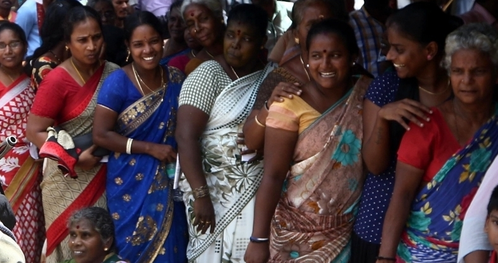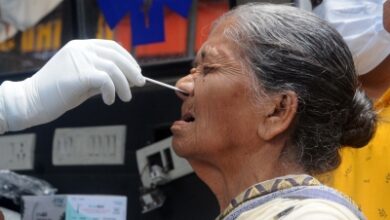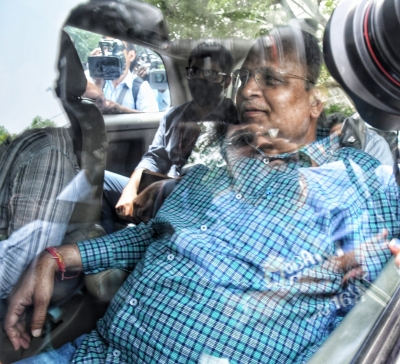
Hyderabad, Sep 23: Telangana claims to be among the first states to provide 50 per cent reservation for women in local bodies and a whopping 53 per cent of the sarpanches in the state are women.
Out of the 12,769 sarpanches 6,808 are females and women have a significant presence in both the urban and local bodies.
The state has 59,000 women as ward members in municipalities and more than 4,000 women representatives in Mandals and Zilla Parishads.
The state claimed to have made significant progress since the early 1990s when one-third reservation was given to women in the local bodies.
Over the years, the representation of women continues to improve in Mandal Parishad and Zilla Parishad territorial constituencies as many of them are Mandal presidents and chairpersons of Zilla Parishads.
Leaders of the ruling Bharat Rashtra Samithi (BRS) claim that real women’s empowerment has been ensured in the state in the last 20 years.
Earlier, the general perception was that while women were being elected or nominated to the posts as per the quota, the real power was in the hands of male members of their families.
In most cases husbands of women public representatives were seen attending official meetings and taking decisions. The women were just “rubber stamps” forced to sign official papers to complete the formalities.
Many studies revealed that women representatives were not free to discharge their constitutional duties and became dummies in the hands of the male family members or village leaders. A large number of elected members of the local bodies, especially women, were not actively participating in the meetings of the local bodies.
However, BRS leaders say things have changed over the last one decade with women asserting themselves.
They claim that after the formation of Telangana efforts were made for the real empowerment of women.
Last year, orders were issued under Panchayat Raj Section 37(5) Act-2018 to ensure that the husbands and relatives of the women public representatives do not interfere in the administrative activities.
They were advised not to participate in the official programmes of their wives and were warned of action for any violation of the instruction.
The Panchayat Raj department announced that if husbands and other relatives of women public representatives were seen supervising or involving themselves in the contract works of the government, people could take their photos and send them to the Mandal-level or district-level officials concerned for immediate action against them.
The ruling party leaders point out that unlike in the past, young and educated women are coming forward to contest the local body elections and they are asserting themselves. They have a good understanding of the issues and are taking decisions on their own to bring a change in their respective constituencies.
Women public representatives are ensuring that the benefits of various welfare programmes reach the beneficiaries at the grassroot level.
They are also playing a key role in improving sanitation, education, health and environment of the areas under their jurisdiction.
This is reflected in Telangana bagging most of the best panchayat awards at the national level. The state won eight out of the 27 National Panchayat Awards, 2023.
Gowthampur, Bhadradri Kothagudem won first place in the healthy panchayat category, Nellutla, Jangaon won first place in the water sufficient panchayat category, Kongat-pally, Mahabubnagar won first place in the socially secured panchayat and Aipoor, Suryapet won first place in the women-friendly panchayat category.
According to Minister for Municipal Administration KT Rama Rao, Telangana bagged 79 national rural awards from 2015 to 2022. The state also bagged 19 of the 20 best gram panchayats under the Sansad Adarsh Gram Yojna.
The women public representatives are contributing to the success of Haritha Haram, a flagship programme of the state government to increase the tree cover of Telangana from 24 per cent to 33 per cent of the total geographical area. The government claims that the programme has resulted in the state’s green cover going up to 28 per cent.
Every gram panchayat has a nursery that is directly managed by the Sarpanch. With 53 per cent of the Sarpanches being women and a sizable number of women being in Mandal and district-level councils, they are playing an important role in increasing the green cover of the state.
There are many stories of women leaders in local bodies setting shining examples. Atram Padma Bai, heading the council of eight tribal villages, set one such example. A farmer growing cotton, oilseeds and pulse on her three acre piece of land, she wanted to do something for 2,000-odd farmers in the villages
She took Rs 30,000 as a loan from an NGO and launched a hiring centre for farming tools such as pick-axes, sickle, spades and wheelbarrows. She started helping farmers who couldn’t afford these tools for their crops by renting out implements on a marginal rate. With the income from this centre, she builds roads in her area. She also used government funds for rainwater harvesting and for installing a water pump to make clean water available for the village school.
Akhila Yadav, a young sarpanch from Madanapuram village in Nalgonda district, made headlines by barricading her village during the Covid-19 pandemic. She wanted to prevent outsiders from entering the village for toddy and stood at the border along with her father every day for a week, to protect the villagers.
Jamuna Nayak, sarpanch of the Dhanura in Adilabad district, fought against female foeticide and child marriage. While spreading awareness about gender equality, she is also making sure that every marriage that takes place in the village is duly registered under the law.






